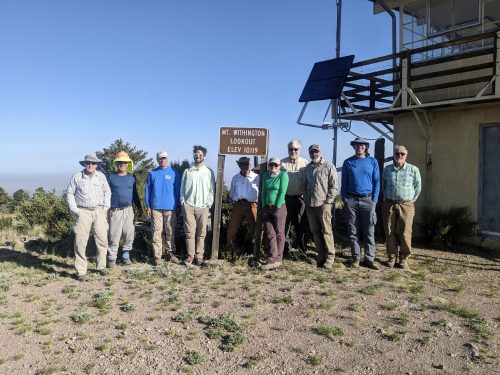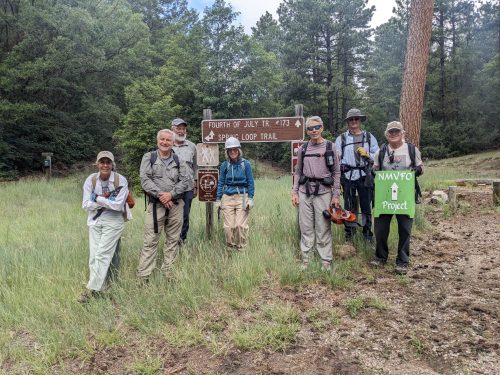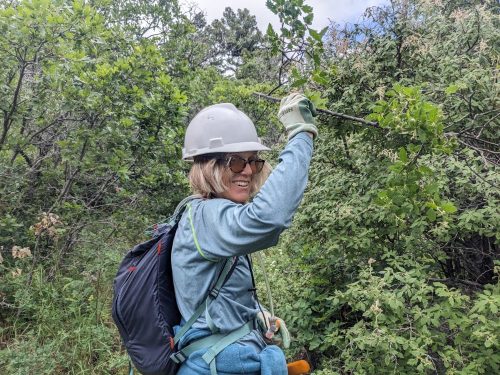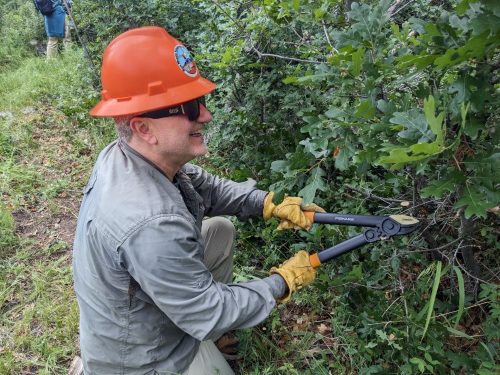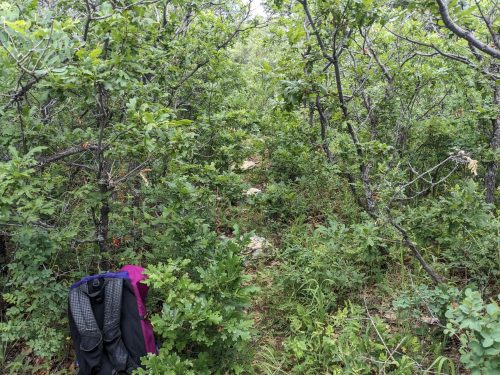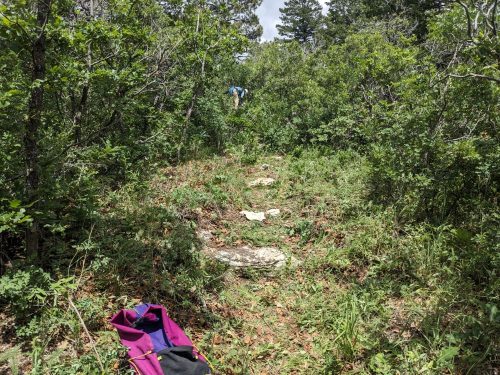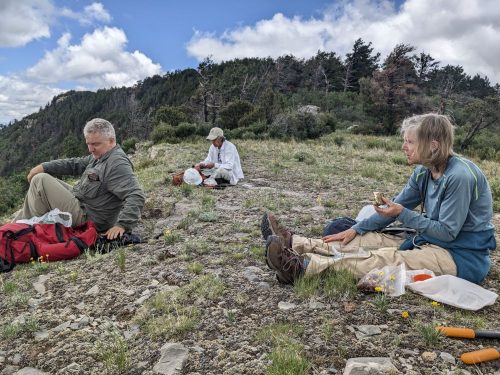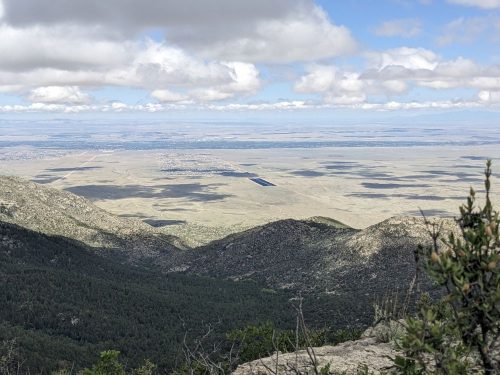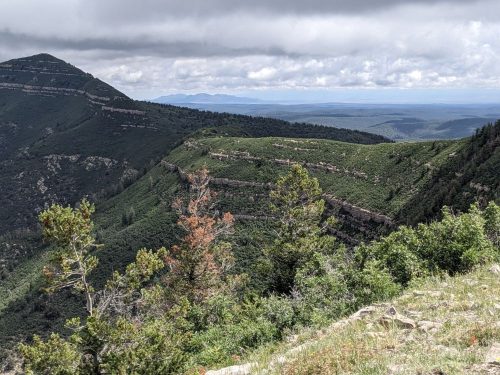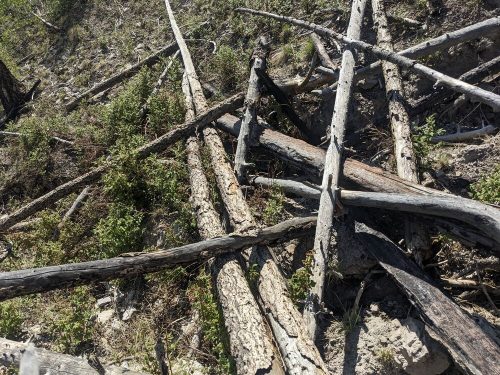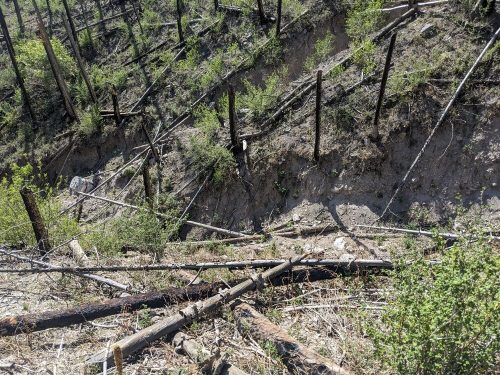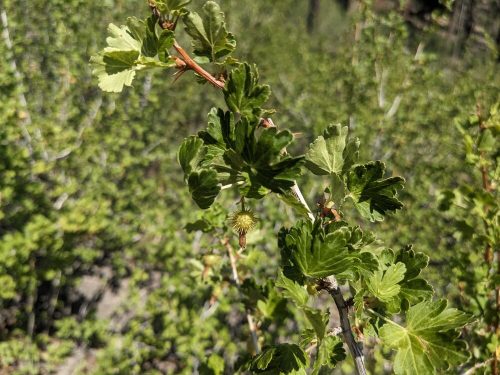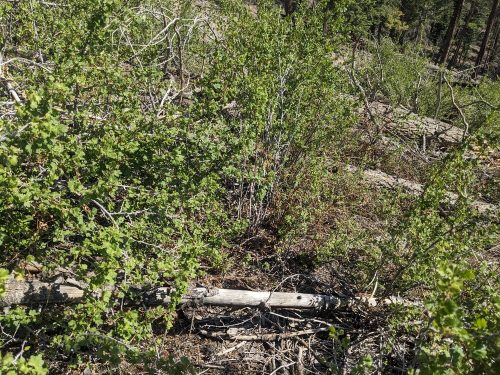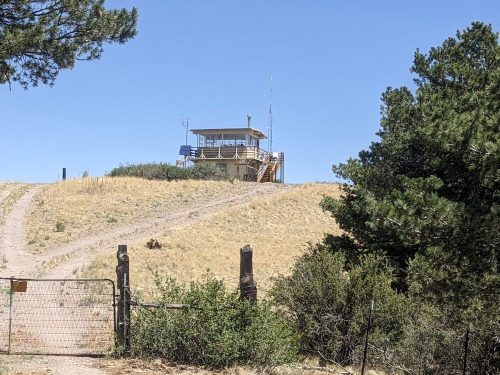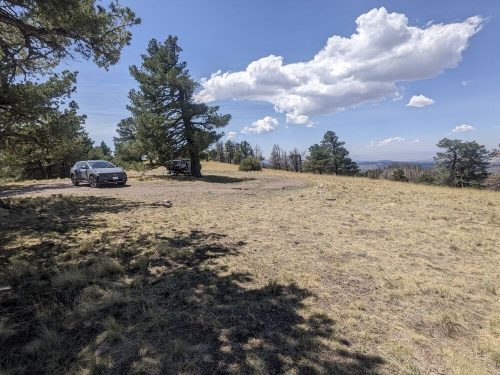15 NMVFO volunteers spent a weekend working on Potato Trail #38 in the Withington Wilderness southwest of Magdalena. We camped at Monica Spring, at 7.5k, and car-pooled 30 minutes each day to the trailhead and worksite at 10k, near Mount Withington.
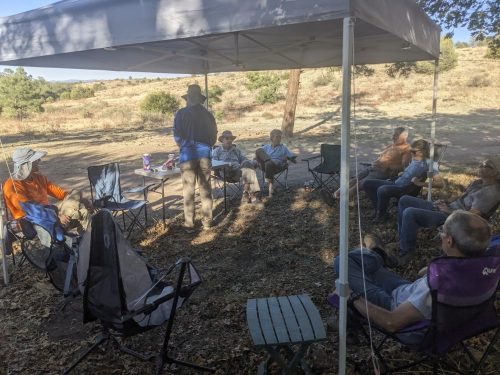
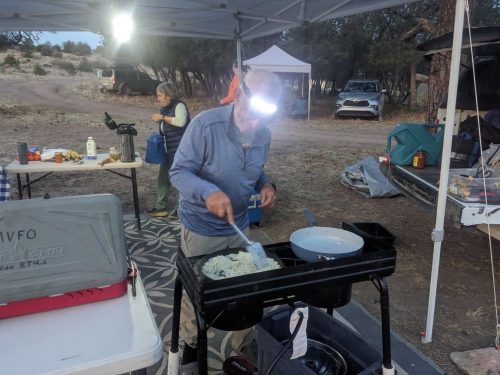
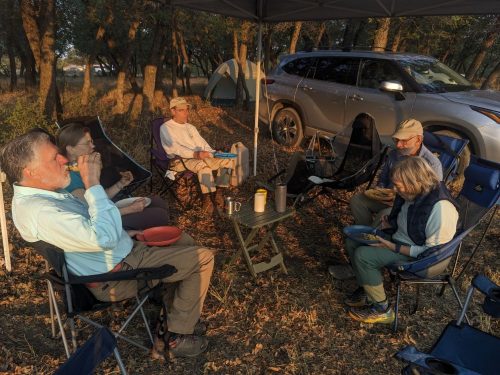
Our campsite was located some distance from our work for lightning safety during a fairly active monsoon season, and indeed on Saturday we needed to leave our work area early because of hail and a nearby electrical storm.
We worked on the top 1.1 miles of Potato Trail, the section with broad switchbacks on a steep slope in a burn scar, clearing many blowdowns and lopping thorny gooseberry and non-thorny Gambel oak. This section of trail was in danger of disappearing, and was becoming difficult to follow, but now is much improved.
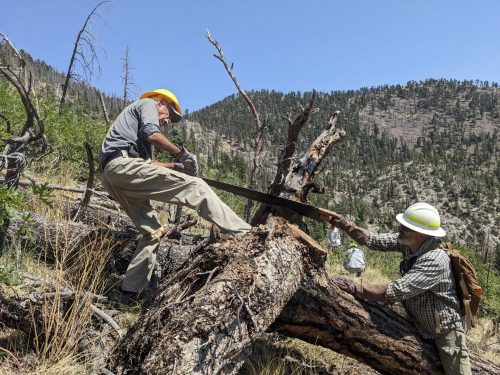
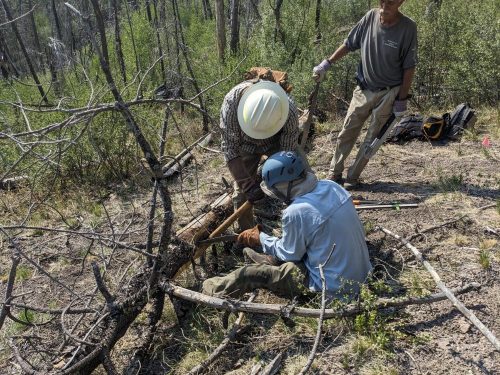
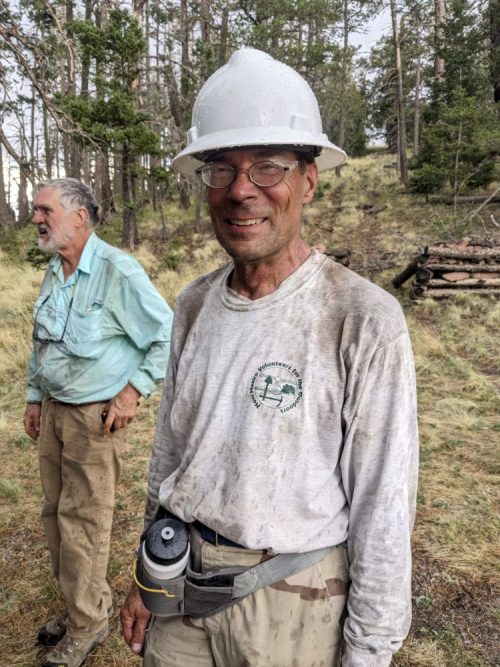
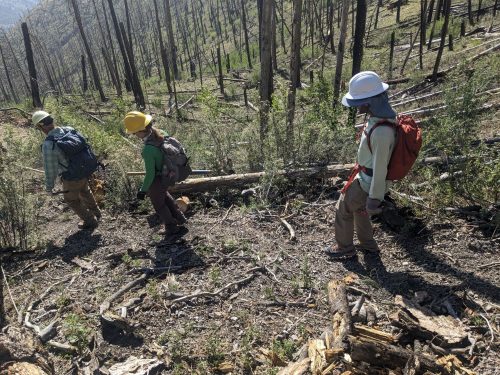
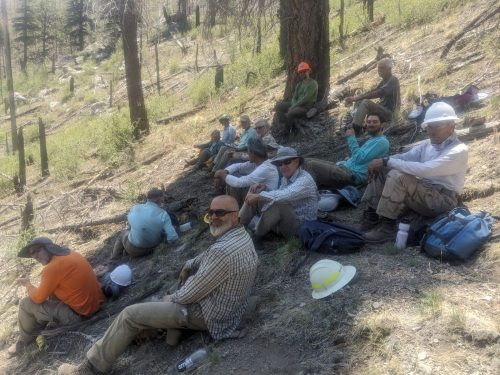
Plenty of standing snags are still present, which will eventually come down across the trail, so we may need to return someday. The biggest issue is where we stopped work, where the trail crosses a large steep drain and two nearby deep gullies with vertical sides. Hikers cannot follow the trail here, and GET hikers typically drop into the main canyon drainage and follow it to one of several crossings with Potato Trail further downhill, climbing over and under an obstacle course of blowdowns in the drainage.
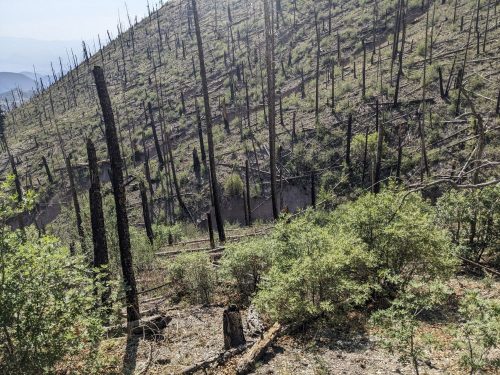
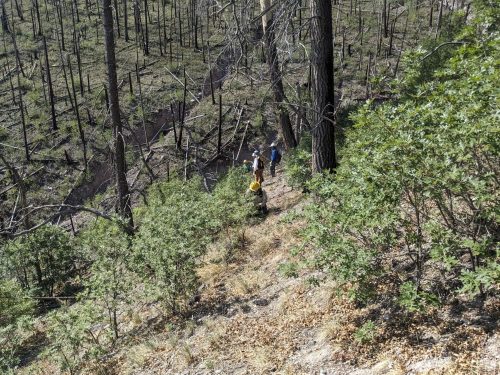
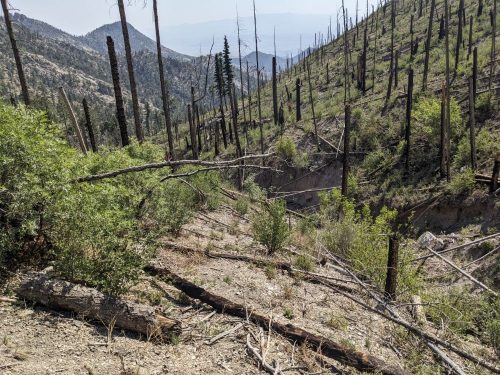
A huge thanks goes out to our intrepid trail crew and cooks crew: Rob, Nick, Jim, Jamie, David, Rifka, Paul, Andrew, Christy, Jeff, Craig, Carlos, Dave, and John.
